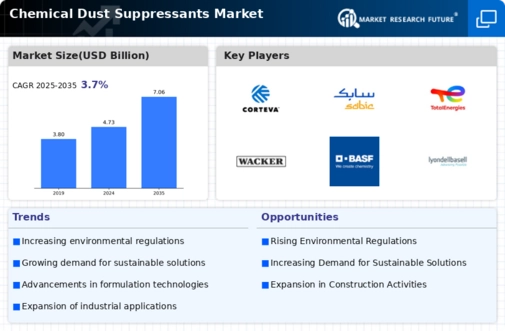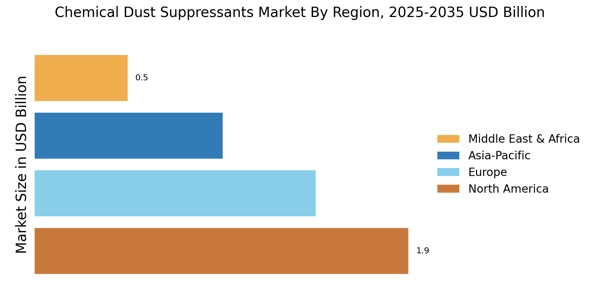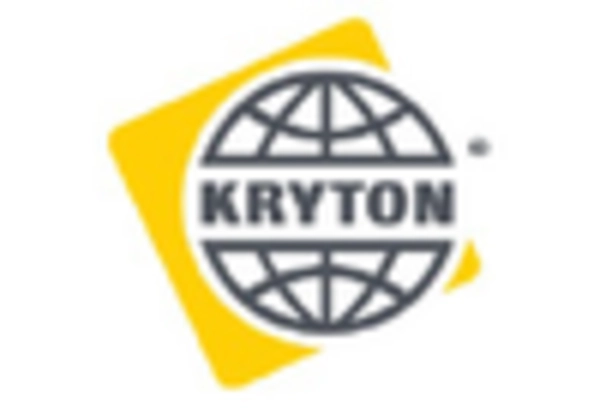Regulatory Compliance
The Chemical Dust Suppressants Market is increasingly influenced by stringent environmental regulations aimed at reducing airborne particulate matter. Governments are implementing laws that mandate the use of effective dust control measures in various sectors, including construction, mining, and agriculture. This regulatory landscape compels companies to adopt chemical dust suppressants that meet compliance standards, thereby driving market growth. As of 2025, the market is projected to expand significantly, with an estimated value reaching several billion dollars. The need for compliance not only enhances safety but also promotes sustainable practices, making it a crucial driver in the Chemical Dust Suppressants Market.
Technological Innovations
Technological innovations are reshaping the Chemical Dust Suppressants Market by introducing advanced formulations and application techniques. New technologies enable the development of more effective and environmentally friendly dust suppressants, which are gaining traction among industries. Innovations such as smart application systems and biodegradable formulations are enhancing the efficiency of dust control measures. As industries seek to optimize their operations and reduce environmental impact, the adoption of these technologies is likely to accelerate. The market is expected to benefit from these advancements, with a projected increase in demand for innovative dust suppression solutions.
Rising Industrial Activities
The resurgence of industrial activities across multiple sectors is a pivotal driver for the Chemical Dust Suppressants Market. Industries such as mining, construction, and manufacturing are experiencing increased operations, leading to higher dust emissions. This rise in activity necessitates effective dust control solutions to ensure worker safety and environmental protection. According to recent estimates, the demand for chemical dust suppressants is expected to grow at a compound annual growth rate of over 5% through 2025. As industries expand, the need for reliable dust suppression methods becomes paramount, thereby propelling the market forward.
Expansion of Construction Sector
The expansion of the construction sector is a critical driver for the Chemical Dust Suppressants Market. With urbanization and infrastructure development on the rise, construction activities are generating significant amounts of dust. This necessitates the use of effective dust suppression methods to comply with regulations and ensure worker safety. The construction industry is projected to grow steadily, contributing to an increased demand for chemical dust suppressants. As projects become more complex and larger in scale, the need for reliable dust control solutions will likely intensify, further propelling the market forward.
Growing Awareness of Health Hazards
There is a growing awareness regarding the health hazards associated with dust exposure, which serves as a significant driver for the Chemical Dust Suppressants Market. Prolonged exposure to dust can lead to respiratory issues and other health complications, prompting industries to prioritize dust control measures. This heightened awareness is influencing companies to invest in chemical dust suppressants that effectively mitigate these risks. As a result, the market is witnessing a shift towards safer and more efficient dust suppression solutions. The increasing focus on occupational health and safety regulations further underscores the importance of this driver in the Chemical Dust Suppressants Market.


















Leave a Comment